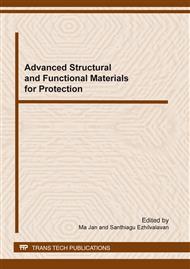p.21
p.25
p.28
p.31
p.34
p.37
p.44
p.48
p.51
Developing Woven Enhanced Silk Fabric for Ballistic Protection
Abstract:
Fabric materials can be in form of woven, knitted, non-woven and braided structures or a combination of these structures can be used for protective fabric. Properties of fabrics depend on the different types of fibres that constitute the fabric and the geometry of the final structure. This project seeks the development of optimally woven enhanced silk fabric for high performance application that can be potentially beneficial to various engineering fields such as ballistic protection for military, aerospace, automotive, sports and marine engineering industries. Natural enhanced silk will be used as the yarns, rather than the traditionally used synthetically produced aramid material which poses an environmental problem. The tensile strength, tensile modulus and elongation of yarns strength are the main influences on ballistic performance. In addition to the tensile properties of the yarn, fabric weave structure is crucial as propagation of stress waves is affected by the weave structure. Mechanical performance of the woven silk fabric of various designs will be subsequently accessed for their effectiveness based on tensile testing and ballistic testing.
Info:
Periodical:
Pages:
34-36
Citation:
Online since:
February 2012
Authors:
Keywords:
Price:
Сopyright:
© 2012 Trans Tech Publications Ltd. All Rights Reserved
Share:
Citation:


